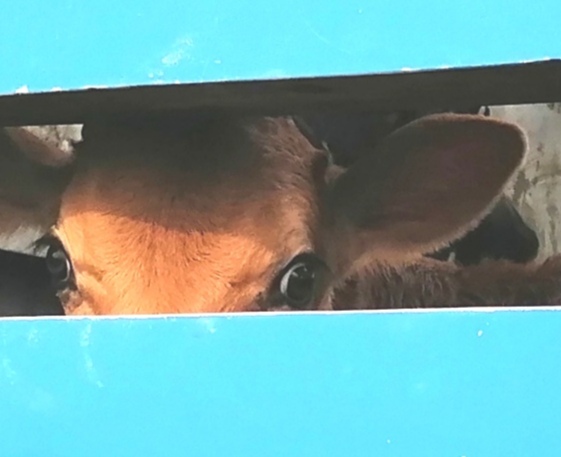Averting Our Gaze – Transportation An Ordeal For Slaughterhouse Animals
Posted on January 30, 2021

I had seen very few animal transport trucks until I moved to a rural area 12 years ago. Then I saw them everywhere. Upset to witness the forlorn faces of the sheep and cows peering out at me, I turned my gaze away. Now I no longer turn away, in fact I do the opposite: I draw closer.
I do vigils at slaughterhouses as part of the worldwide Animal Save Movement. Trucks coming to my two local slaughterhouses, that kill cows, sheep and pigs, may have spent four hours on the road, even before they arrive. I sometimes see cows being unloaded of a Sunday afternoon that are scheduled for slaughter on Tuesday morning. This means the animals would have more than 40 hours without any food before they are killed (they have water fountains in their pens.) In New Zealand where cattle and sheep are grass-fed, they generally have food available to them whenever they want to eat, and even a few hours without eating would cause them to suffer hunger pangs. On top of their fear and uncertainty, and possibly suffering pain from injuries incurred en route, the cows are left to go hungry because the Industry doesn’t want to waste food on animals about to die, and prefer an empty colon when they are disembowelling them.
New Zealand doesn’t have weather extremes some other countries experience, but I have seen many animals stuck in metal trucks panting with the heat on a hot day. I have seen others waiting in outdoor pens in the howling wind and rain. The way Animal Ag treats sentient beings is a disgrace, and as our featured article shows, transport is one of the ordeals they put them through. In a significant number of cases it can be fatal.
There is only way to stop the torture of innocent beings in the food system, and that is to change the food system. We can stop the exploitation of sentient animals by transitioning to a plant-based diet.
– Sandra Kyle
Feature Photo Image of days-old bobby calf at slaughterhouse, by Sandra Kyle
Read the Humane League article here
← NEXT

